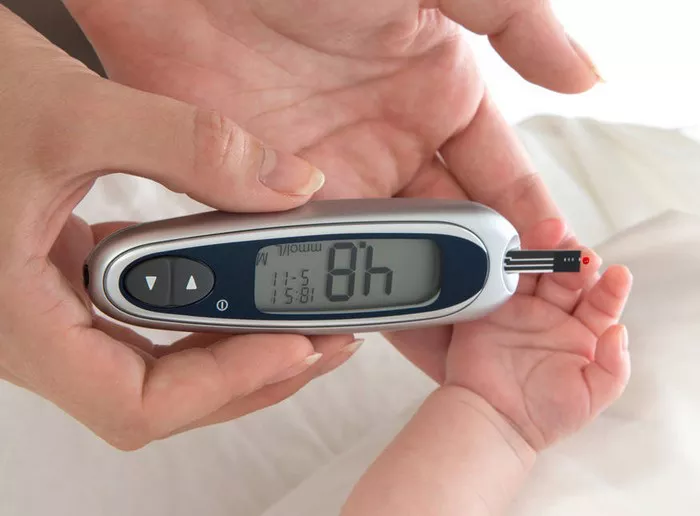Introduction:
Blood glucose levels are a critical aspect of overall health, particularly for individuals with diabetes. However, understanding what constitutes normal blood sugar levels after eating, also known as postprandial blood glucose levels, is essential for everyone, regardless of diabetic status. Postprandial blood glucose levels can provide valuable insights into metabolic health and the body’s response to food. In this article, we will explore what normal postprandial blood glucose levels are, factors influencing them, and why monitoring them is crucial for maintaining overall well-being.
Normal Postprandial Blood Glucose Levels:
Postprandial blood glucose levels refer to the concentration of glucose in the bloodstream after consuming a meal. For individuals without diabetes, normal postprandial blood glucose levels typically peak around 1 to 2 hours after eating and then gradually return to fasting levels within 2 to 3 hours. Ideally, these levels should remain below 140 mg/dL (7.8 mmol/L) at the 2-hour mark post-meal.
However, it’s important to note that individual responses to food can vary based on several factors, including age, metabolic health, body composition, and the composition of the meal itself. Therefore, what constitutes normal postprandial blood glucose levels may vary slightly from person to person. Nonetheless, maintaining blood glucose levels within a healthy range after eating is crucial for overall health and well-being.
Factors Influencing Postprandial Blood Glucose Levels:
Several factors can influence postprandial blood glucose levels, including:
- Carbohydrate Content of the Meal: Carbohydrates are the primary macronutrient responsible for raising blood glucose levels after a meal. Meals high in refined carbohydrates, such as white bread, sugary snacks, and sweetened beverages, can lead to rapid spikes in blood glucose levels. On the other hand, meals rich in complex carbohydrates, fiber, and protein tend to result in more gradual increases in blood glucose levels.
- Fiber Content: Fiber plays a crucial role in slowing down the absorption of glucose from the digestive tract into the bloodstream. Meals high in fiber, such as fruits, vegetables, whole grains, and legumes, can help stabilize postprandial blood glucose levels and promote long-term metabolic health.
- Fat Content: While fats themselves do not directly raise blood glucose levels, meals high in fat can delay gastric emptying and slow down the digestion and absorption of carbohydrates. This can lead to a more gradual rise in blood glucose levels over time.
- Protein Content: Like fats, protein has minimal effects on blood glucose levels. However, including protein-rich foods in a meal can help promote satiety and stabilize postprandial blood glucose levels.
- Portion Size: The amount of food consumed in a meal also plays a significant role in determining postprandial blood glucose levels. Larger meals, especially those high in carbohydrates, can lead to more significant spikes in blood glucose levels compared to smaller, portion-controlled meals.
- Physical Activity: Regular physical activity can enhance insulin sensitivity and promote glucose uptake by skeletal muscles, leading to improved postprandial glucose control. Engaging in physical activity before or after meals can help mitigate postprandial blood glucose spikes.
- Medication and Insulin Use: For individuals with diabetes, the type and timing of medication or insulin administration can significantly influence postprandial blood glucose levels. Proper medication management in consultation with a healthcare provider is essential for achieving optimal glucose control.
Why Monitoring Postprandial Blood Glucose Levels Matters:
Monitoring postprandial blood glucose levels is crucial for several reasons:
- Early Detection of Metabolic Dysfunction: Consistently elevated postprandial blood glucose levels may indicate underlying metabolic dysfunction, such as insulin resistance or impaired glucose tolerance. Early detection and intervention can help prevent the progression to more severe conditions like type 2 diabetes.
- Risk Assessment: Elevated postprandial blood glucose levels have been associated with an increased risk of cardiovascular disease, even in individuals without diabetes. Regular monitoring can help identify individuals at higher risk and guide preventive measures.
- Optimizing Glycemic Control: For individuals with diabetes, achieving and maintaining optimal glycemic control is essential for preventing long-term complications. Monitoring postprandial blood glucose levels provides valuable feedback on the effectiveness of dietary choices, medication regimens, and lifestyle interventions.
- Personalized Nutrition Strategies: Understanding individual responses to different foods can help tailor nutrition strategies to optimize postprandial blood glucose control. This may involve meal planning, carbohydrate counting, or adjusting macronutrient ratios to better manage blood glucose levels.
- Improving Quality of Life: Fluctuations in blood glucose levels can impact energy levels, mood, and cognitive function. By stabilizing postprandial blood glucose levels, individuals can experience more consistent energy levels throughout the day and overall improved quality of life.
Conclusion:
In conclusion, maintaining normal postprandial blood glucose levels is essential for overall health and well-being, regardless of diabetic status. While individual responses to food can vary, aiming to keep blood glucose levels below 140 mg/dL (7.8 mmol/L) at the 2-hour mark post-meal is generally advisable. By understanding the factors influencing postprandial blood glucose levels and monitoring them regularly, individuals can take proactive steps to optimize metabolic health, reduce the risk of chronic diseases, and improve their overall quality of life. Working closely with healthcare professionals, including diabetes doctors and registered dietitians, can provide valuable support and guidance in achieving these goals.
Related topics:


























